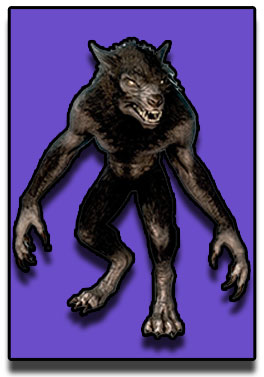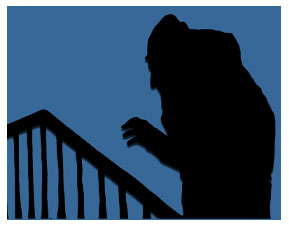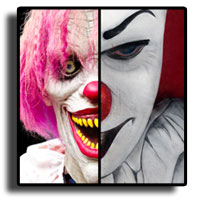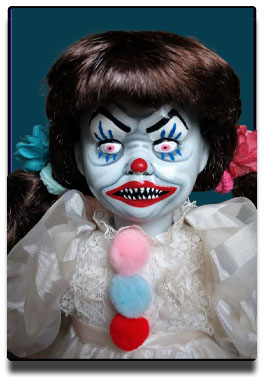| Have you ever wanted to go looking for the Loch Ness Monster? Or wondered what the Baba Yaga flies around in or even where to find a three-headed dog? Or even just the monsters under the bed. The most scary monsters that will give you a real fright if they chose to hide under your bed. |
 |
|
 |
|
 There were 69 unprovoked shark bites in 2023, a Florida-based database found. Ten people died from unprovoked shark attacks globally in 2023, a slight uptick over the five-year average, according to a Florida-based database that tracks the rare events. There were 69 unprovoked shark bites in 2023, a Florida-based database found. Ten people died from unprovoked shark attacks globally in 2023, a slight uptick over the five-year average, according to a Florida-based database that tracks the rare events.
A shark attack is an attack on a human by a shark. Every year, around 80 unprovoked attacks are reported worldwide. Despite their rarity, many people fear shark attacks after occasional serial attacks, such as the Jersey Shore shark attacks of 1916, and horror fiction and films such as the Jaws series. Out of more than 500 shark species, only three of them are responsible for a double-digit number of fatal, unprovoked attacks on humans: the great white, tiger, and bull. The oceanic whitetip has probably killed many more shipwreck and plane crash survivors, but these are not recorded in the statistics. Humans are not part of a shark's normal diet. Sharks usually feed on small fish and invertebrates, seals, sea lions, and other marine mammals. A shark attack will usually occur if the shark feels curious or confused. |
 |
|
 |
|
 The sandman. when I was little and wouldn't go to sleep my mother would tell me the sandman will come and put sand in your eyes so go to sleep. Well that was terrifying and I would lay there wondering just when he was going to show up and if he did how could I talk him out of putting sand in my eyes. It then occurred to me I could throw a glass of water on him and that would wash him away. So every night I would ask my mom for a glass of water and leave it on my nightstand. That way I had my weapon all ready if he decided to show up. I don't remember how long this went on for but yes this was a scary thing to a little girl. Here is the nice version of the sandman . The sandman. when I was little and wouldn't go to sleep my mother would tell me the sandman will come and put sand in your eyes so go to sleep. Well that was terrifying and I would lay there wondering just when he was going to show up and if he did how could I talk him out of putting sand in my eyes. It then occurred to me I could throw a glass of water on him and that would wash him away. So every night I would ask my mom for a glass of water and leave it on my nightstand. That way I had my weapon all ready if he decided to show up. I don't remember how long this went on for but yes this was a scary thing to a little girl. Here is the nice version of the sandman . |
 |
|
 |
|
|
|
|
 Werewolf, in European folklore, a man who turns into a wolf at night and devours animals, people, or corpses but returns to human form by day. Some werewolves change shape at will; others, in whom the condition is hereditary or acquired by having been bitten by a werewolf, change shape involuntarily, under the influence of a full moon. If he is wounded in wolf form, the wounds will show in his human form and may lead to his detection. Belief in werewolves is found throughout the world. The psychiatric condition in which a person believes he is a wolf is called lycanthropy. Werewolf, in European folklore, a man who turns into a wolf at night and devours animals, people, or corpses but returns to human form by day. Some werewolves change shape at will; others, in whom the condition is hereditary or acquired by having been bitten by a werewolf, change shape involuntarily, under the influence of a full moon. If he is wounded in wolf form, the wounds will show in his human form and may lead to his detection. Belief in werewolves is found throughout the world. The psychiatric condition in which a person believes he is a wolf is called lycanthropy.
In countries in which wolves are not common, the monster may assume the form of another dangerous animal, such as the bear, tiger, or hyena. In French folklore, the werewolf is called loup-garou. France was particularly afflicted with reports of them in the 16th century, and there were many notable convictions and executions of loups-garous. As a subject for 20th-century horror films, the werewolf tradition is second only to the vampire tradition in popularity. Werewolves are believed to turn into after death.
Werewolves among others. Similarly, the Inuit giant monster wolf Amarok Grendel and his mother attack at night, as do other trolls, ogres and giants Ghosts appear at night.
Spectral dogs, the black dogs of Britain especially, appear at night.
Witches and hags do their mischief at night in mythology.
The sack man and his counterparts like Bubak the scarecrow, Dzunuḵ̓wa the giant ogre and the Nachtkrapp search for children at night to carry away.
Various forms of Aswang come out at night to hunt the unwary. The night is also a time for the Yokai. On summer nights, there is the Hyakki Yagyō where Yokai, Oni, Ghosts, and all sorts of creatures parade down the roads. Goblins and elves pop out at night to do their work; the fey folk cross from their world to ours at nights.
Most monsters appear during the night; humans fear the darkness, the cold, the alien world of nightfall. And it is when our imaginations run wild and create a whole menagerie of monsters. |
 |
|
 |
|
Get your turtlenecks ready, it's time to talk vampires.
 If you're fascinated by creatures of the night, the kind that prey on human blood, you aren't alone. From dressing up in vampire costumes on Halloween to watching them in scary horror movies, it seems like everyone's obsessed with the bloodsuckers. If you're fascinated by creatures of the night, the kind that prey on human blood, you aren't alone. From dressing up in vampire costumes on Halloween to watching them in scary horror movies, it seems like everyone's obsessed with the bloodsuckers.
In Europe, where much of the vampire folklore originates, the vampire is usually considered a fictitious being; many communities may have embraced the revenant for economic purposes. In some cases, especially in small localities, beliefs are still rampant and sightings or claims of vampire attacks occur frequently.
No, vampires, the kind that legends are built on, the kind that drink blood, can be found worldwide.
"The blood-drinker is the one found in six of the seven continents, there's not a doubt at all," Jonathan Weiss, folklorist, historian and founder of Johnathan Weiss Tours in New Orleans told TODAY.
So, are vampires real? It's possible.
According to Weiss, vampires exist in different forms in different cultures and countries, but the concept of bloodsucking creatures, like the ones we dress up as on Halloween, have been around for centuries.
That said, there are people who drink blood — just like vampires. But don’t panic, for the most part, they're not the sort to roam the streets looking for unsuspecting victims like they do in horror movies.
The history of vampires
The idea of vampire-like creatures feasting on human blood has been around for centuries and gained foothold in Eastern Europe, according to Joseph Laycock, professor of religious studies at Texas State University.
And while vampire folklore isn't new, the word “vampire” is. It first appeared in writing in the 1700s but Laycock told TODAY the term was used to describe price-gouging merchants rather than bloodsucking monsters.
Bram Stoker published "Dracula." Based on Vlad the Impaler, the real-life Romanian prince with a thirst for bloody warfare, Stoker's Count Dracula is a far cry from Byron's sexy, womanizing vampire. “He has hairy palms; he has bad breath and he’s more like a corpse".
The modern-day vampire that most of us relate to comes from the 1931 film “Dracula” starring Bela Lugosi. Bela Lugosi’s “Dracula” set the bar for all other vampire movies. The black-and-white movie established Dracula as a wealthy, debonair vampire whose immortal kiss is desirable instead of deadly. For the most part, it’s how many people perceive vampires today.
So, are vampires real?
If you consider people who drink the blood of others for pleasure, then the answer is yes. A 2015 survey conducted by the Atlanta Vampire Alliance have found that there are at least 5,000 people in the United States who identify as real vampires. Although many people with blood fetishes actually call themselves "sanguines," others identify as vampires and, like the fictional creatures, avoid sunlight and drink human blood from donors. |
 |
|
 |
|
 The evil clown, also known as the killer clown, is a subversion of the traditional omic clown character, in which the playful trope is instead depicted in a more disturbing nature through the use of horror elements and dark humor. The evil clown, also known as the killer clown, is a subversion of the traditional omic clown character, in which the playful trope is instead depicted in a more disturbing nature through the use of horror elements and dark humor.
American serial killer and rapist John Wayne Gacy became known as the Killer Clown when arrested in 1978, after it was discovered he had performed as Pogo the Clown at children's parties and other events; however, Gacy did not actually commit his crimes while wearing his clown costume.
The concept of the evil clown is related to the irrational fear of clowns, known as coulrophobia, a neologism coined in the context of informal.
 Similarities between a clown's appearance and the cultural depictions of demons and other infernal creatures, noting "[the clown's] chalk-white face in which the eyes almost disappear, while the mouth is enlarged to a ghoulish bigness, looks like the mask of death". Similarities between a clown's appearance and the cultural depictions of demons and other infernal creatures, noting "[the clown's] chalk-white face in which the eyes almost disappear, while the mouth is enlarged to a ghoulish bigness, looks like the mask of death".
According to psychology professor Joseph Durwin at California State University, Northridge, young children are "very reactive to a familiar body type with an unfamiliar face". Researchers who have studied the phobia believe there is some correlation to the uncanny valley effect. Additionally, clown behavior is often "transgressive" (anti-social behavior) which can create feelings of unease. |
 |
|
 |
|
|
| |
|


